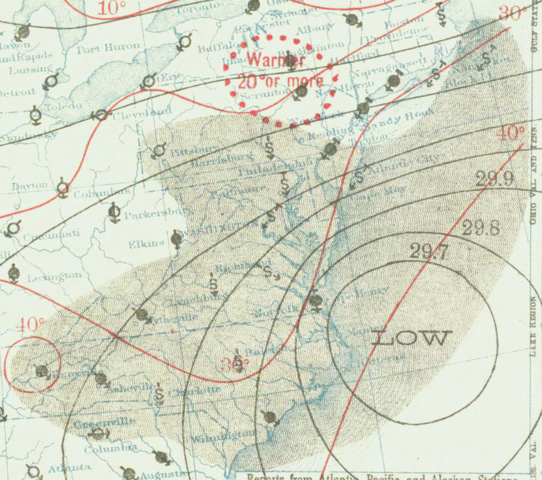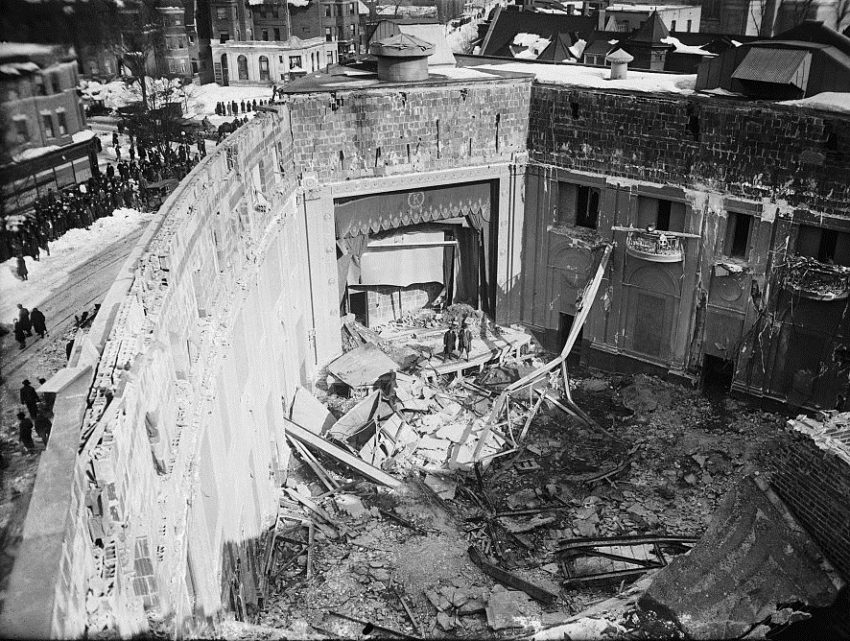During the evening of January 28th, 1922, movie fans settled into Washington, DC’s largest theater, the Knickerbocker, to enjoy the silent comedy “Get-Rich-Quick Wallingford”. Perhaps as many as a thousand people were packed into the new theater, eager to relax and enjoy the show.
They deserved the break after struggling all day with the heaviest snowstorm on record in the nation’s capital. Well over two feet had fallen across the city. Rock Creek Park, on the north side, had measured 33 inches with over three inches of meltwater equivalence. It was all thanks to slow-moving cyclone that followed a classic track for blockbuster snowstorms in the Mid-Atlantic. Low pressure developed in the Gulf of Mexico on 27-Jan, then exploded off the southeast coast, drawing energy from the warm Gulf Stream. High pressure over New England sealed the storm off from faster jet stream steering winds. This allowed the system to drift slowly and dump heavy snows along the Eastern Seaboard for most of three days. Railroad lines were paralyzed and although Congress was forced to adjourn early, the congressmen were stuck in the city, including Andrew Jackson Barchfield of Pennsylvania. Unlike contemporary storms, this one hit with little to no advance warning. Indeed, the weather forecast from the day before predicted fair skies with rising temperatures. Fortunately, the storm struck late on Friday into a weekend, somewhat reducing the disruption to normal business.

Just after intermission, around 9 p.m. that Saturday night, the roof of the Knickerbocker collapsed. Survivors and passers-by outside almost immediately began to try to rescue those trapped by the rubble. The army was called in to assist with rescue operations and maintain control of the scene. Despite their heroic efforts, 98 people lost their lives in the disaster, including the Pennsylvanian Rep. Barchfield, along with a former U.S. senator and several business leaders. An additional 133 were injured.
In the aftermath of the disaster, officials investigating the causes had to sift through several theories. One of the more interesting was that the structure had been weakened by specific notes sounded by the pipe organ that sometimes accompanied movie screenings. Faulty design eventually received the official blame. Specifically, the flat roof and use of arch girders instead of more robust stone pillars allowed for the structure to be overwhelmed by the weight of tons of wet snow. This judgment may have allowed the death toll of the tragedy to rise to an even 100, but only years later – both the architect and owner of the theater committed suicide in 1927 and 1937, respectively.
